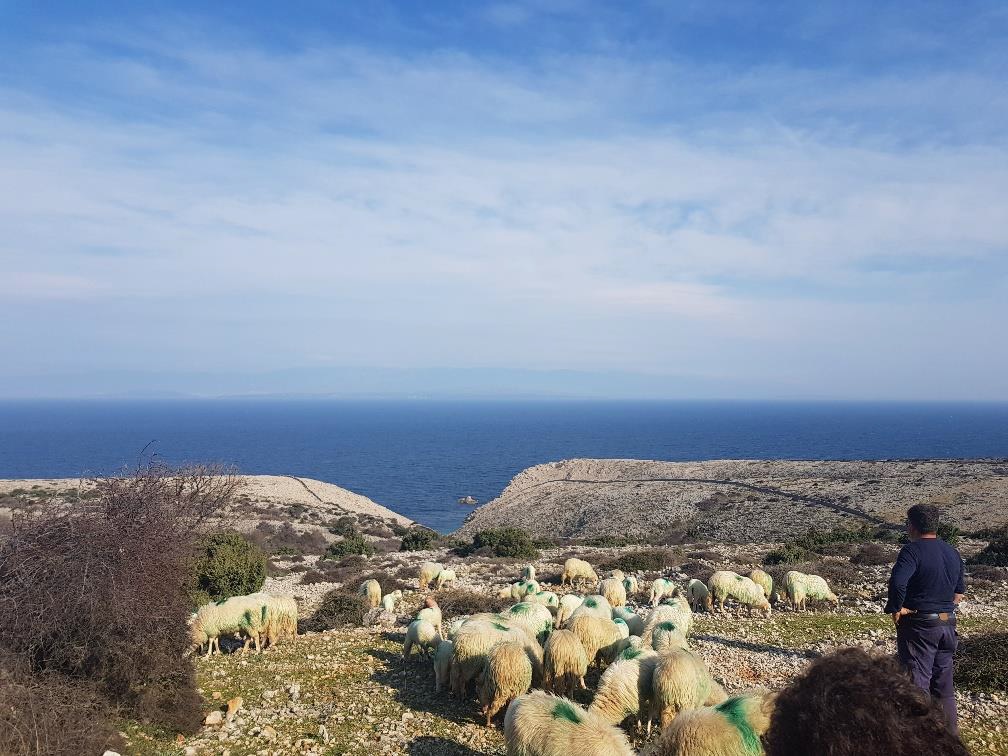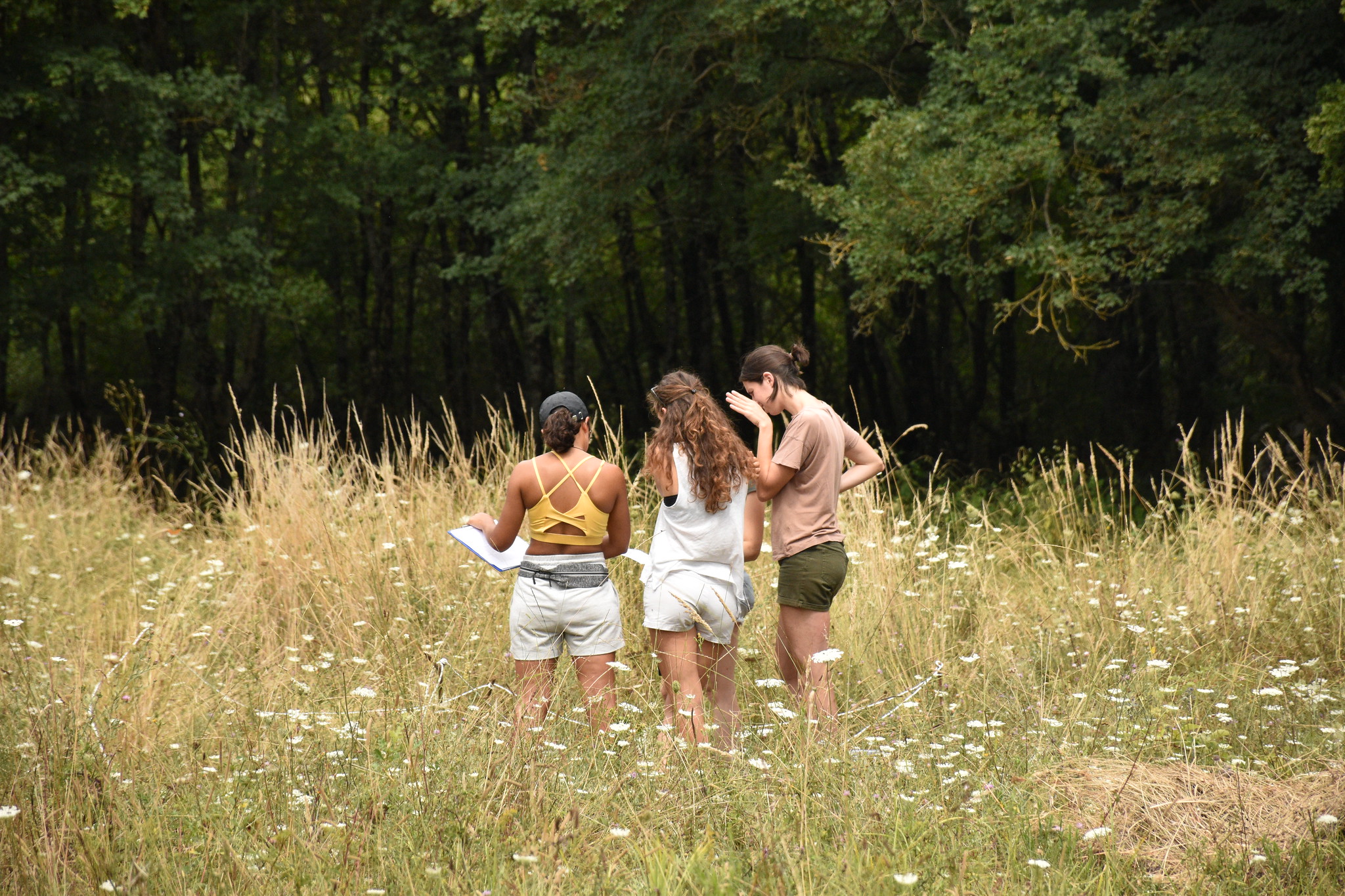Tomislav Sotinac shares his experiences from Germany, where he travelled together with his „Eastern Adriatic Monk Seal“ project partners
The work day is over, and I’m smiling from ear to ear as I head home. In late February, I’ll be going on a field trip to Germany! Or, more accurately, an Eastern Adriatic Monk Seal project partner meeting in Bremen. Being involved in Mediterranean monk seal field research in the Adriatic, I was invited by the project leader. In addition to meeting our partners from Greece, Montenegro and Albania and learning about their experiences in our shared fight for the preservation of the species, I’m also interested in the planned visit to Heligoland – an island in the North Sea and popular hangout spot for grey seals and harbor seals – as well as the visit to Norddeich Seal Sanctuary. Project coordinator Lisa from Euronatur has arranged everything, we just need to show up. I’m on my way, and I’ll be taking notes!
In the German city of Bremen, winter is still putting up a fight, and thus we are met by dreary, cold and rainy weather. During the train ride, Lisa’s co-worker Christian has many questions for all of us. His rapid-fire interviews soon turn into written biographies. My co-worker and I jokingly call him „Euronatur’s Melani“, referring to Biom’s communications assistant. However, we don’t let him get to us; instead, we while away the time by exchanging experiences, sharing new information about the project and telling jokes in broken English. From Cuxhaven, we travel by boat to Heligoland. The thick fog and rough sea make us think that our Mediterranean seals, cruising in the warm Adriatic, might be luckier than their northern counterparts. Heligoland (meaning „Holy land“ in the local Frisian dialect) slowly emerges from the fog, a strange blend of northern minimalist architecture and an abundance of seaside hotels, with a magnificent lighthouse and a UFO-like water tower in the background. The small tourist town probably looks even better in the summer when it’s full of people, but, surprisingly enough, the gift shops and the charming restaurants are working at full capacity regardless of the season. We soon understand why – the western part of the island is full of nesting northern gannets. These big, loud birds with no fear of humans are a true birdwatching attraction, bringing people to the island even in winter. Unfortunately, their nests are full of scraps of fishing nets which they use as building material. Due to this, the birds often get entangled and injured, according to an ornithologist working at the island’s bird observatory.
This island is a rest stop for migratory birds. It was here that the Heligoland trap – a quick, low-stress method of catching, examining, ringing and releasing birds – was invented. At dusk, as the sun sinks into the sea and the famous Lange Anna cliff is tinted red, this small, strange island separates us even more from space and time. The islanders covered the holes from the British bombardment with foil and turned them into freshwater puddles, thus attracting even more birds to the island. The remains of German military fortresses, docks and submarine pens have become new nesting cliffs for birds. Nature creates something new and useful even from such ghastly scenes, and the islanders understand this.
The next day, the wardens kindly take us on a tour of the Dune – a nearby sand island – and tell us how, at the end of World War II, the British decided to blow up the entire island with dynamite, but fortunately, it only partially collapsed. They say “fortunately”, because otherwise today we would not be able to see the hundreds of harbor seals and gray seals for whom this island is a favourite meeting spot, a place to mate and raise their pups. Males, females and pups are resting on the beach, waiting for the waves to subside. Gray seal pups stay on the shore to wait for their mothers, who feed them until their “baby” fur is replaced by adult fur, after which they can dive and swim independently. Harbor seal pups change their fur in the womb, and are thus able to swim and dive a few hours after calving; their mothers often nurse them in the sea. The wardens tell us that extremely aggressive males can cause problems and even kill cubs, so they are sometimes forced to shoot such males to protect the cubs and mothers. They are delighted with the island’s punk festival, which brings together punks from all over Germany and neighbouring countries, who organise clean-ups after the parties and concerts to remove litter and parts of fishing nets scattered on the shore. Whoever sees a baby seal once and hears them calling for their mother will remember this island forever. However, it is time for us to leave. On the ship, there is silence and a strange depression, a feeling as if we were kidnapped from “our” island to be taken to the mainland. Still, we are happy to travel to Norddeich tomorrow to visit the seal sanctuary.
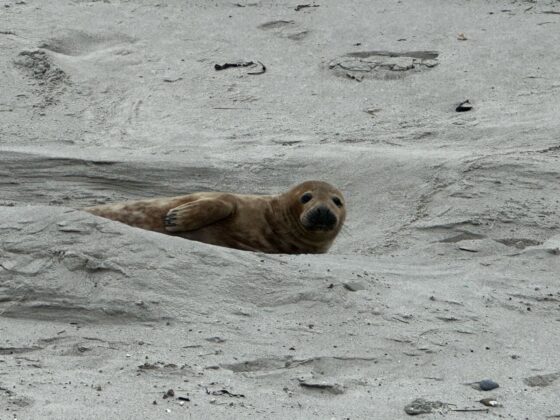
In Norddeich, we are greeted by Tim, a friendly warden who gives us a lecture on the biology and ecology of seals and introduces us to the work he has been doing for twenty years. The sanctuary mostly rescues young seals because sometimes the pups lose their mother or she abandons them. Often, due to the multitude of tourists walking along the beach, the mother cannot get close enough to feed the pup. The sanctuary has organised volunteers who observe seals on the beaches, and examine and weigh any pups that seem abandoned or injured (usually by male seals or unsupervised dogs). Injured pups are immediately taken to the sanctuary. Pups that aren’t injured but seem abandoned are weighed again after 24 hours. If they lose weight, it means that the mother has not fed them all day, which is a sufficient indication that they’ve been abandoned, and are then taken to the sanctuary.
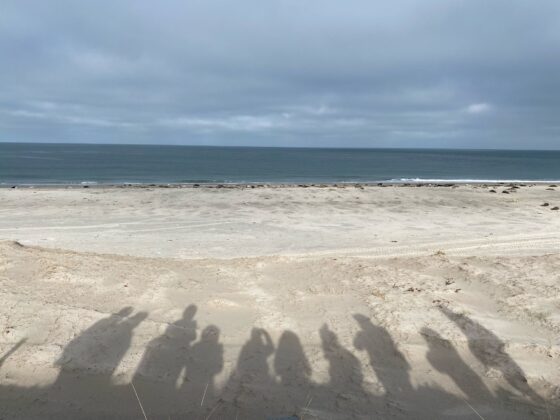
The volunteers and wardens also work to raise awareness about the behaviour of seals, and warn citizens who try to approach them or those with unsupervised dogs. In the sanctuary, there are pools where young seals “practice” before being released into nature. The team explains to us how they feed the young seals with a liquid made of finely ground salmon, which contains the fats, proteins and minerals necessary for the seals’ development. When the seals are old enough, they are released near the colonies from which they originated. The sanctuary is full of children developing awareness of the importance of seals and other living creatures in the sea, and broadening their horizons through various educational games. According to the sanctuary’s calculations, they earn 75% of their income from tickets, and a significant part of the rest of the income comes from souvenirs and donations, which makes it completely financially self-sufficient. There are souvenirs for all generations and even alcoholic “seal” gin!
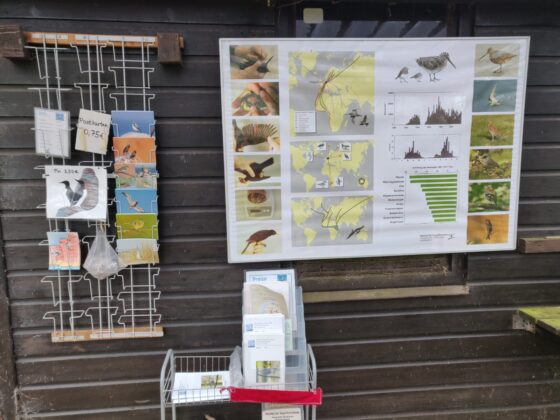
It’s as if some kind of “luck” follows us every day – we’re late for the train to Bremen, which luckily means we can talk for another two hours over hot chocolate about everything we’ve experienced in the previous two days. Our coordinator Lisa is already visibly tired and I don’t envy her, having to know how to control eight cheerful southerners in the gloomy north. We arrive in Bremen late and go to sleep, because in the morning we have to present our work on the project so far and our plans for the future. A leisurely morning walk to the meeting location slowly reveals the old part of the city. Lisa promises that we will go on a tour after the meeting, and we take her word for it.
The Greek duo, Odyseas and Kimon, tell us how many hundreds of Mediterranean monk seals live in the Greek seas and how many caves they’ve found to give birth to their pups. We all envy them and carefully absorb every piece of information that can help us in our further work. Our Albanian colleagues Sabina and Kosta show us how they installed camera traps on the ceilings of caves using two-component stone adhesive, while Montenegrin colleagues Nevena and Ksenija demonstrate how they communicate with the public and tourists in Montenegro to introduce them to the much-anticipated return of Mediterranean monk seals to our Adriatic.
The Greeks kindly let us know that we can always contact them about future problems with tourists or resolving conflicts with those who may not be too fond of monk seals. We are comforted by the thought that having such problems and conflicts is actually a good sign, because it means that the number of monk seals in the Adriatic is increasing. Who knows, maybe one day we too, like the Germans, will have to chase tourists away from seals resting on the beaches! With these bittersweet thoughts, we go on a tour of the old town of Bremen. Tomorrow we are going back to our homes, and I am already a bit depressed by the thought that the next time I see the colleagues with whom I have shared these incredible experiences, it will only be on a screen. Thanks to everyone, especially coordinator Lisa!
Translated by Maša Dvornik In Norddeich, we are greeted by Tim, a friendly warden who gives us a lecture on the biology and ecology of seals and introduces us to the work he has been doing for twenty years. The sanctuary mostly rescues young seals because sometimes the pups lose their mother or she abandons them. Often, due to the multitude of tourists walking along the beach, the mother cannot get close enough to feed the pup. The sanctuary has organised volunteers who observe seals on the beaches, and examine and weigh any pups that seem abandoned or injured (usually by male seals or unsupervised dogs). Injured pups are immediately taken to the sanctuary. Pups that aren’t injured but seem abandoned are weighed again after 24 hours. If they lose weight, it means that the mother has not fed them all day, which is a sufficient indication that they’ve been abandoned, and are then taken to the sanctuary.
In Norddeich, we are greeted by Tim, a friendly warden who gives us a lecture on the biology and ecology of seals and introduces us to the work he has been doing for twenty years. The sanctuary mostly rescues young seals because sometimes the pups lose their mother or she abandons them. Often, due to the multitude of tourists walking along the beach, the mother cannot get close enough to feed the pup. The sanctuary has organised volunteers who observe seals on the beaches, and examine and weigh any pups that seem abandoned or injured (usually by male seals or unsupervised dogs). Injured pups are immediately taken to the sanctuary. Pups that aren’t injured but seem abandoned are weighed again after 24 hours. If they lose weight, it means that the mother has not fed them all day, which is a sufficient indication that they’ve been abandoned, and are then taken to the sanctuary.
 The volunteers and wardens also work to raise awareness about the behaviour of seals, and warn citizens who try to approach them or those with unsupervised dogs. In the sanctuary, there are pools where young seals “practice” before being released into nature. The team explains to us how they feed the young seals with a liquid made of finely ground salmon, which contains the fats, proteins and minerals necessary for the seals’ development. When the seals are old enough, they are released near the colonies from which they originated. The sanctuary is full of children developing awareness of the importance of seals and other living creatures in the sea, and broadening their horizons through various educational games. According to the sanctuary’s calculations, they earn 75% of their income from tickets, and a significant part of the rest of the income comes from souvenirs and donations, which makes it completely financially self-sufficient. There are souvenirs for all generations and even alcoholic “seal” gin!
The volunteers and wardens also work to raise awareness about the behaviour of seals, and warn citizens who try to approach them or those with unsupervised dogs. In the sanctuary, there are pools where young seals “practice” before being released into nature. The team explains to us how they feed the young seals with a liquid made of finely ground salmon, which contains the fats, proteins and minerals necessary for the seals’ development. When the seals are old enough, they are released near the colonies from which they originated. The sanctuary is full of children developing awareness of the importance of seals and other living creatures in the sea, and broadening their horizons through various educational games. According to the sanctuary’s calculations, they earn 75% of their income from tickets, and a significant part of the rest of the income comes from souvenirs and donations, which makes it completely financially self-sufficient. There are souvenirs for all generations and even alcoholic “seal” gin!
 It’s as if some kind of “luck” follows us every day – we’re late for the train to Bremen, which luckily means we can talk for another two hours over hot chocolate about everything we’ve experienced in the previous two days. Our coordinator Lisa is already visibly tired and I don’t envy her, having to know how to control eight cheerful southerners in the gloomy north. We arrive in Bremen late and go to sleep, because in the morning we have to present our work on the project so far and our plans for the future. A leisurely morning walk to the meeting location slowly reveals the old part of the city. Lisa promises that we will go on a tour after the meeting, and we take her word for it.
The Greek duo, Odyseas and Kimon, tell us how many hundreds of Mediterranean monk seals live in the Greek seas and how many caves they’ve found to give birth to their pups. We all envy them and carefully absorb every piece of information that can help us in our further work. Our Albanian colleagues Sabina and Kosta show us how they installed camera traps on the ceilings of caves using two-component stone adhesive, while Montenegrin colleagues Nevena and Ksenija demonstrate how they communicate with the public and tourists in Montenegro to introduce them to the much-anticipated return of Mediterranean monk seals to our Adriatic.
The Greeks kindly let us know that we can always contact them about future problems with tourists or resolving conflicts with those who may not be too fond of monk seals. We are comforted by the thought that having such problems and conflicts is actually a good sign, because it means that the number of monk seals in the Adriatic is increasing. Who knows, maybe one day we too, like the Germans, will have to chase tourists away from seals resting on the beaches! With these bittersweet thoughts, we go on a tour of the old town of Bremen. Tomorrow we are going back to our homes, and I am already a bit depressed by the thought that the next time I see the colleagues with whom I have shared these incredible experiences, it will only be on a screen. Thanks to everyone, especially coordinator Lisa!
Translated by Maša Dvornik
It’s as if some kind of “luck” follows us every day – we’re late for the train to Bremen, which luckily means we can talk for another two hours over hot chocolate about everything we’ve experienced in the previous two days. Our coordinator Lisa is already visibly tired and I don’t envy her, having to know how to control eight cheerful southerners in the gloomy north. We arrive in Bremen late and go to sleep, because in the morning we have to present our work on the project so far and our plans for the future. A leisurely morning walk to the meeting location slowly reveals the old part of the city. Lisa promises that we will go on a tour after the meeting, and we take her word for it.
The Greek duo, Odyseas and Kimon, tell us how many hundreds of Mediterranean monk seals live in the Greek seas and how many caves they’ve found to give birth to their pups. We all envy them and carefully absorb every piece of information that can help us in our further work. Our Albanian colleagues Sabina and Kosta show us how they installed camera traps on the ceilings of caves using two-component stone adhesive, while Montenegrin colleagues Nevena and Ksenija demonstrate how they communicate with the public and tourists in Montenegro to introduce them to the much-anticipated return of Mediterranean monk seals to our Adriatic.
The Greeks kindly let us know that we can always contact them about future problems with tourists or resolving conflicts with those who may not be too fond of monk seals. We are comforted by the thought that having such problems and conflicts is actually a good sign, because it means that the number of monk seals in the Adriatic is increasing. Who knows, maybe one day we too, like the Germans, will have to chase tourists away from seals resting on the beaches! With these bittersweet thoughts, we go on a tour of the old town of Bremen. Tomorrow we are going back to our homes, and I am already a bit depressed by the thought that the next time I see the colleagues with whom I have shared these incredible experiences, it will only be on a screen. Thanks to everyone, especially coordinator Lisa!
Translated by Maša Dvornik



